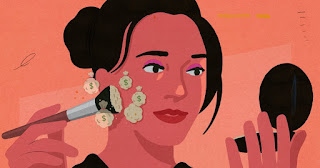How to Launch a Makeup Brand and Sell Online: The Ultimate Guide
I need a new mascara. Loyal as I am to certain beauty brands, I’m currently a free agent in the mascara department. 👀
There are well over 200 beauty brands sold through my local drug store, and another 250+ represented by Sephora. Any one of those brands may sell 10 different mascaras, promising every feature from lengthening to curling to water resistance. As a customer, I’m faced with a good problem—there’s too much choice.
For would-be entrepreneurs pursuing a business idea in the beauty space, this saturation presents a real challenge.
Those with the ability to go quick to market, can jump on makeup trends and fill gaps in the industry.
Is there really room for another BB cream? Another matte lipstick? How do you, a budding makeup brand founder, get your products to stand out in a crowded market? How does a new mascara get visibility among the literal thousands?
Luckily, ecommerce solutions and access to manufacturing resources have democratized beauty in the past decade, opening up an industry once dominated by a few massive brands. And, surprisingly, there’s still room. Trends and niche markets spring up almost daily, ready for the taking. Those with the ability to go quick to market (we’ll tell you how), can jump on these trends and fill gaps in the industry.
Here, we’ll take you through how to start a makeup line from scratch, with expert advice and real examples from successful beauty brands.
Meet the beauty business experts
We interviewed four beauty founders who sell makeup online (and in-store) to hear first-hand about their experiences building makeup brands.
One of the best ways to validate a product idea or find a business opportunity is to research trends. You can do that in a number of ways.
If you’re planning to enter the beauty industry, you should already be consuming beauty content regularly. Follow influencers, brands, bloggers, YouTubers, publications, and beauty journalists. Subscribe to email lists and set up alerts to stay on top of emerging trends. You can also check Google Trends to see, based on search data, if there’s growing interest in your idea.
Beware of hinging your entire brand to one trend, though. What happens if it’s a fad and interest dies as quickly as it was born? Consider if you will be able to pivot and develop new products as quickly as beauty trends change.
Vive’s overall brand doesn’t ebb and flow with beauty trends because it focuses on its specific customer’s needs. “Since day one, we put diversity first,” Leslie says, noting that many other brands see diversity as a trend.



Comments
Post a Comment